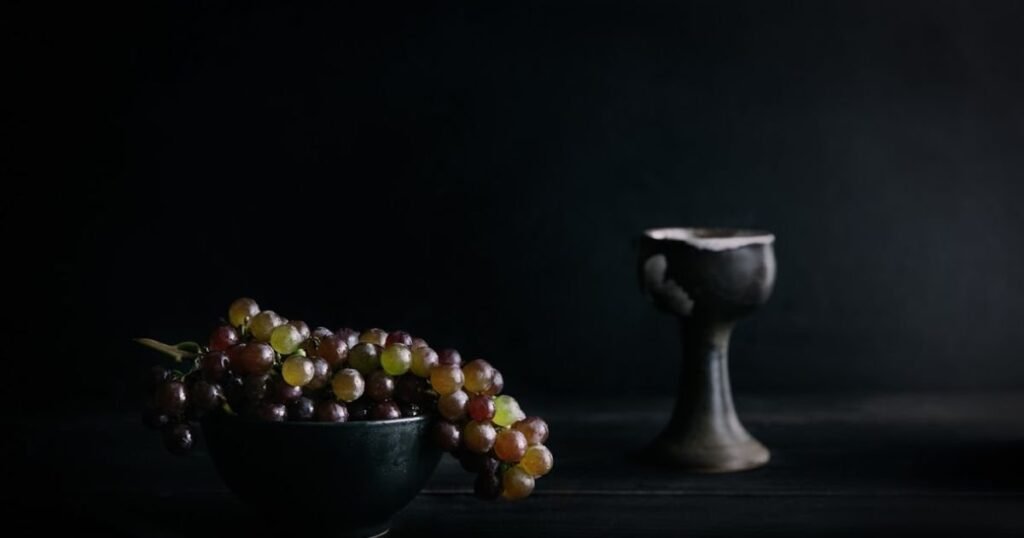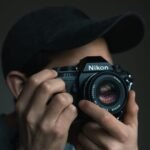Still-life photography is a fantastic way for beginners to start learning the art of photography. It’s all about capturing everyday objects simply and creatively. You don’t need fancy equipment or a big budget to get started. With just a few household items and a camera, you can create beautiful images that tell a story. In this guide, we’ll walk you through the basics of simple still-life photography, offering tips and examples to help you get started. Whether you’re using a smartphone or a DSLR, this guide is perfect for anyone new to photography.
[ez-toc]
What Is Still Life Photography?
Still-life photography can be described as a form of photography where the photographer gets to capture photographs of stationary objects. They can be any sort, for instance, fruits, flowers, or even other ordinary items. The main aim is to make the objects look appealing, and for this, the objects are correctly arranged, and good lighting is used. It is quite different from photographing people, for example, or animals since life still deals with inanimate things. It is good because you can take as many as you want and manipulate all scene aspects.
6 Beginner Tips for Succesful Still Life Images

1. Prepare Your Equipment
Like a marathon runner, you should also ensure that the camera, tripod, and lenses are correctly positioned. Remember to check your battery and memory card as well. This minimizes the chances of intermissions during your shoot, as preparation is critical to achieving this.
2. Plan Your Scene
As you consider the ideas you wish to implement, focus on the objects you want to photograph. Organize them in a manner that forms some narrative or intrigue. This is important since it avoids trying to figure out what to do next while the best shot can be taken.
3. Composition
Excellent composition is essential to creating a good still-life image. When aligning your objects, following the rule of thirds is best. What is most appealing should be tried regarding the angles and how the object or people are framed.
4. Camera Settings
Learn to set your camera to the correct settings to achieve clarity. Select a small aperture to avoid high amounts of light entering the sensor and a low ISO to minimize noise. Having a few test shots to see what works is always advisable.
5. Backdrops
Choose a background that fits in with the scene you are portraying. It should not be the focus of attention but add an extra appeal. The greyscale should be preferable; pastel shades are usually the most effective.
6. Choose the Right Light
Lighting plays a crucial role in creating a still-life image. Natural light is even better, but artificial light is quite acceptable. One aspect of lighting that should be considered is focusing on shadows and highlights to create the required mood.
Different Types of Still Life Photography

Tabletop Photography
Tabletop Photography is a special kind of photography in which the subject is placed on a table or any flat surface and then photographed. It can be brilliant to photograph toys, flowers, and anything else, from composition and angles to lighting.
Product Photography
Product photography is used to display product items and is mostly used in advertisements. It aims to make the product as attractive as possible, focusing on its benefits. Avoid clutter around the backgrounds, and make sure the lighting is appropriate.
Food Photography
Food photography’s primary objective is to make food appealing to the consumer. It is common in recipe books, food and drink lists, or social media. This particularly relates to lighting and styling so the food looks as fresh and appealing as possible.
Found Object Photography
Found object photography is a type of photography in which the photographer takes pictures of ordinary objects that people may not easily notice. The task is to make or look for the beautiful in the banal. Both creativity and perspective are vital.
Still Life Photography Equipment
After deciding what type of still-life photography to start, some basic requirements will be necessary. A good camera is paramount. However, other instruments also must be addressed. A tripod is helpful as it supports your camera, particularly when taking photos that require extended exposure time. It will also help if you have several kinds of lenses on hand. A macro lens is useful when focusing on a tiny subject, and a standard lens is for significant subjects in the frame. Don’t forget about props! That means exciting objects can help you set your photos apart.
Still Life Photography Lighting
Lighting plays a paramount role in still-life photography. It can turn an ordinary object into a masterpiece of art; the ability to manipulate light enables one to produce the required atmosphere and bring out the features.
Light Reflectors
A reflector is used mainly to illuminate the area where it bounces light on the desired object. They assist in painting those areas that might be hard to reach due to the limitation of light. Different colors of reflectors are available to provide various results. Silver reflectors create an incredible light on the subject, while gold reflectors give warmth to a subject. Reflectors are one of the cheapest additions to your lighting gear.
Speedlights and Strobes
Two kinds of flash provide Augmented bursts of illumination: Speedlights and strobes. Again, it is available in sets, is more portable, and fits directly onto the camera. One of the significant benefits is that they are portable and perfect for occasions requiring quick installations. Flashes are less powerful but portable, while strobes are more powerful and commonly used indoors, especially in studios. It does not flicker and produces significant light best suited for still-life photography.
Softboxes
Softboxes are indispensable tools for achieving scrim and high-quality light. They soften the illumination, thus eliminating hotspots or areas of high illumination intensity. This makes the subject you are shooting look as sleek as possible. Softboxes are available in different forms, including square, rectangular, oval, and round, thus enabling individuals to direct the light beams in the particular way they want. They can be helpful to anybody who wishes to make their pictures look more professional.
Camera Lens for still life photography
Picking the proper lens for still-life photos is the main starting point and is crucial to shooting beautiful images that will attract an audience. For the close-up moments, a macro lens is required. It helps you concentrate on tiny things about your subject, which sets it apart. A 50mm lens is also perfect for this type of camera. It is general-purpose and can take images of objects in natural conditions. For big scenes, you should use a zoom lens. This enables you to change the frame without changing the camera’s position and thus gives you better control over the pictures you take.
Cameras for Still Life Photography

There are several types of cameras for still-life photography. A DSLR is preferred for its ability to be configured to the user’s preference and easily switch lenses. It is always helpful in many ways, mainly because it gives the photographer absolute control over his shots. Another superb choice is the mirrorless camera. The first type is lightweight and has a good image quality. They also have electronic viewfinders, which can assist in how the clicker will turn out before one snaps it. If you don’t want to get that complicated, let me tell you that your smartphone camera is more than enough, as long as the lighting is optimized and the composition is good.
Still Life Photography FAQs
What equipment do I need to take still-life photographs?
You would need a camera, tripod, and quality lighting to make this kind of show. Other helpful equipment in outdoor photography includes light reflectors and softboxes to regulate shadows and accentuate. Furniture, for instance, backgrounds or surfaces on which the models are placed, also helps enhance the look or model.
How do I correctly arrange my still life for still-life photography?
First, one has to select his or her topic and define what particular narrative he or she wants to share. Arrange your objects thoughtfully. Make sure to mount the camera on a stand so it does not shake. Try to take photos from different angles and use various light sources to get the best shot.
What type of lighting is appropriate for still-life photography?
For the best results, working under soft, diffused light is recommended. It minimizes strong reflections, brings smoothness to the surface, and makes it look even. Soft light is the best lighting for a photo, which can be natural from a window or artificial from softboxes or diffusers. There is always the need to harness the lights to a more favourable position for a scene.
How can I make my subjects in still-life photos more vibrant?
Three essential concepts are composition, light and texture, Stability and movement, depth of field and blur, and child/adult. Always incorporate skid lines to guide the viewers’ attention. Use contrast and shades with greater intensity to create a sense of relief. Try to apply different textures and backgrounds to add variety between the objects and subjects that need to be photographed.
What typical mistakes can you make in still-life photography?
The most popular mistake is that the indexes are not lit well. Severe light can take your focus away from the object. Another error is an untidy arrangement of composition. The photo looks cluttered if there are too many items in the picture. Establishing a direct connection is the most effective way of creating a powerful image, most often when the setup is kept simple.
Final Words
Still-life photography can be a great way to start your photography journey. It lets you explore your creativity and learn the basics of lighting, composition, and focus. Remember, the key is to practice and experiment. Try different objects, lighting setups, and angles to find your unique style. As you grow, you’ll see your skills improve. Don’t be afraid to make mistakes. They’re part of the learning process. Keep shooting, and you’ll capture fantastic still-life photos in no time!





